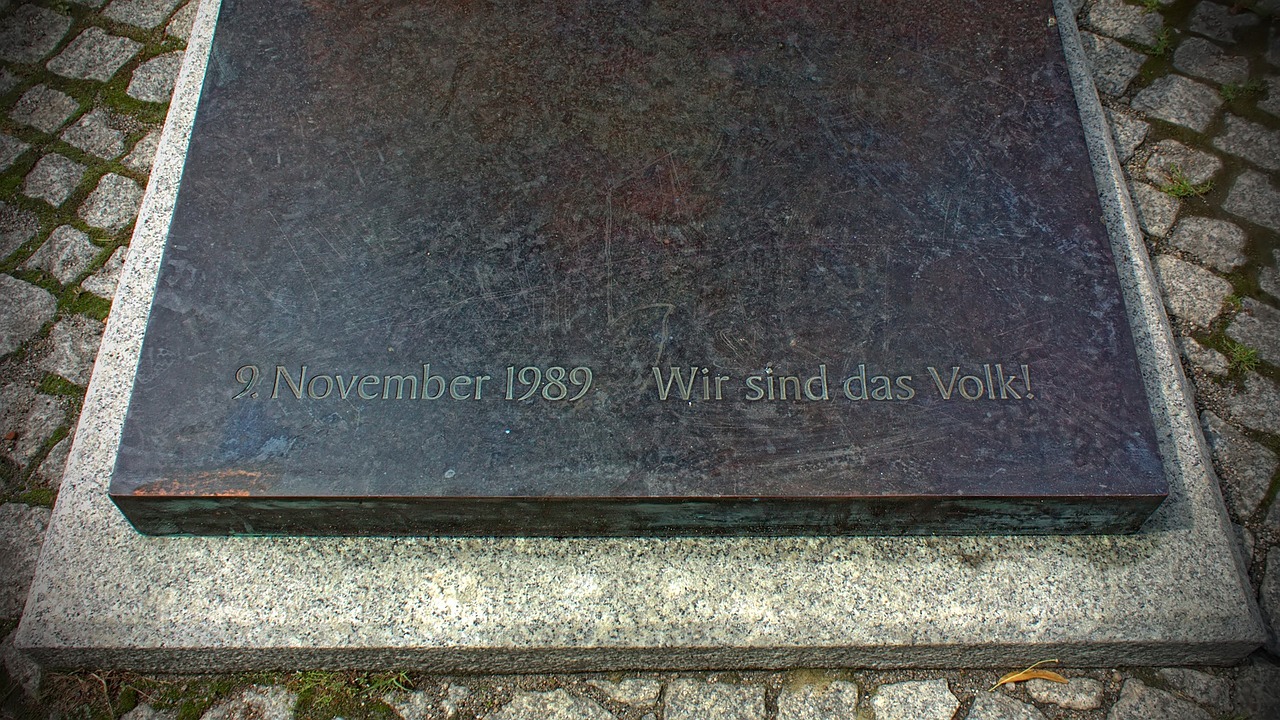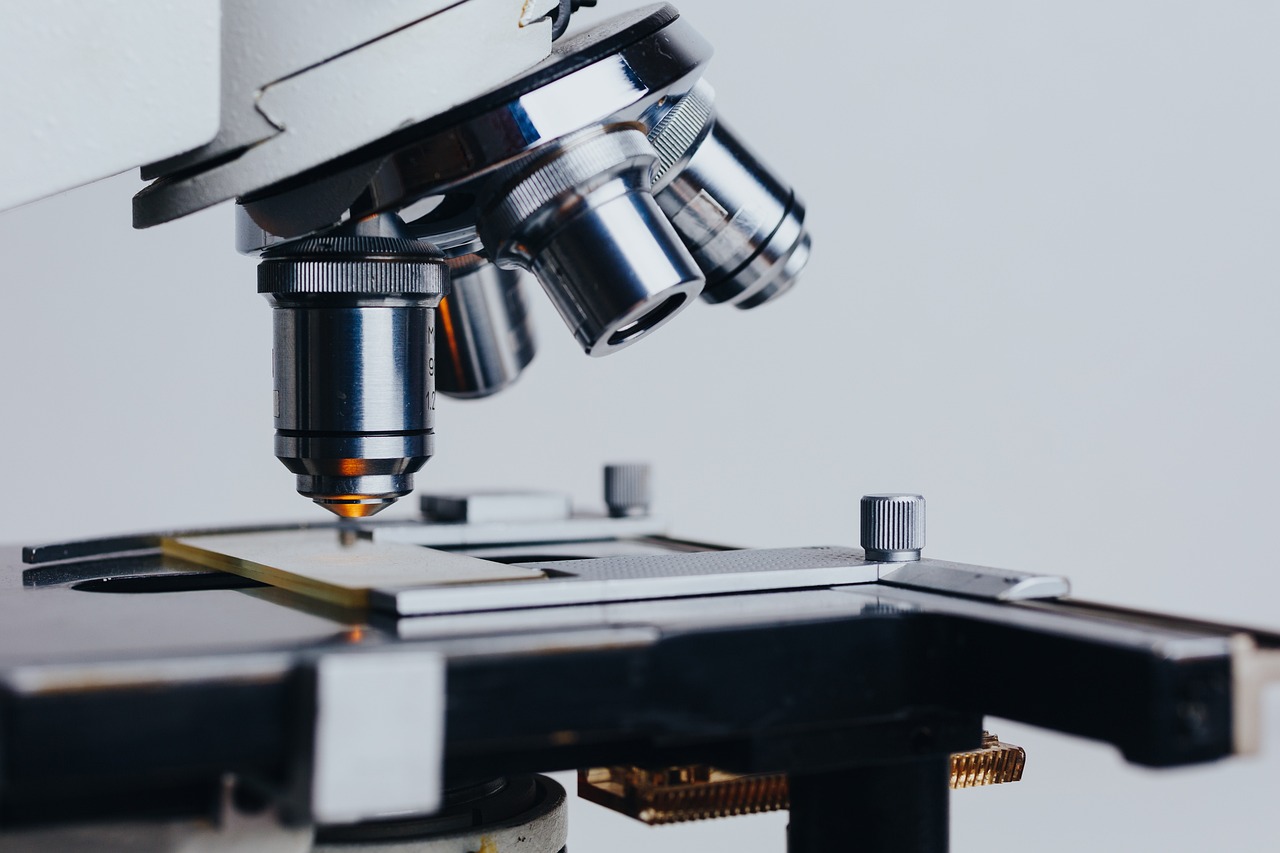The Scientific Revolution - Transforming Knowledge
When we think about the history of human knowledge, one period stands out as a true turning point - the Scientific Revolution. This era, which unfolded in the 16th and 17th centuries, marked a seismic shift in how we perceive the world around us. The Scientific Revolution was not just a series of isolated discoveries; it was a profound transformation that reshaped our understanding of nature, society, and our place in the universe.

The Origins of the Scientific Revolution
The Scientific Revolution of the 16th and 17th centuries marked a pivotal moment in human history, transforming the way we understand the world around us. At its core, this revolution was fueled by a spirit of inquiry, curiosity, and a relentless pursuit of knowledge. The origins of this revolution can be traced back to a convergence of factors that set the stage for a seismic shift in scientific thinking.
During this period, key figures such as Nicolaus Copernicus, Galileo Galilei, Johannes Kepler, and Isaac Newton emerged as trailblazers who challenged prevailing beliefs and laid the groundwork for a new era of scientific exploration. These visionaries dared to question the status quo, paving the way for a revolution that would forever alter our understanding of the natural world.
At the heart of the Scientific Revolution was a profound shift towards empirical evidence and systematic observation as the foundation of scientific inquiry. This emphasis on observation and experimentation marked a departure from traditional modes of knowledge acquisition, leading to a wave of groundbreaking discoveries and innovations.
The Scientific Revolution was not merely a scientific phenomenon; it was a seismic shift that reverberated through every aspect of society. By challenging entrenched beliefs such as the geocentric model of the universe, this revolution fundamentally altered our perception of the cosmos and our place within it.
One of the defining features of the Scientific Revolution was the development of the scientific method, a systematic approach to inquiry that emphasized hypothesis testing, experimentation, and the rigorous accumulation of knowledge. This methodological framework laid the groundwork for modern scientific practices and continues to shape the way we investigate the mysteries of the universe.
Technological advancements played a crucial role in driving the progress of the Scientific Revolution. Innovations such as the telescope and microscope expanded the frontiers of knowledge, allowing scientists to peer into the microscopic world and gaze at the stars with unprecedented clarity.
As scientific ideas spread across continents, the dissemination of knowledge through publications, academies, and scientific societies played a crucial role in shaping the global impact of the Scientific Revolution. This exchange of ideas laid the foundation for a truly interconnected world of science and innovation.
The interplay between science and society during the Scientific Revolution was profound, leading to sweeping changes in education, politics, and cultural norms. As scientific advancements reshaped our understanding of the world, they also catalyzed societal transformations that continue to resonate to this day.
The legacy of the Scientific Revolution endures in our modern world, shaping the trajectory of science, technology, and our understanding of the natural world. The spirit of inquiry and discovery that drove this revolution continues to inspire generations of scientists and innovators to push the boundaries of knowledge and explore the mysteries of the universe.

The Role of Observation and Experimentation
In the realm of scientific discovery, the role of observation and experimentation stands as a cornerstone of progress and innovation. Picture a scientist peering through a microscope, observing the intricate dance of microorganisms, or an astronomer gazing through a telescope, uncovering the mysteries of distant galaxies. These acts of observation, coupled with rigorous experimentation, have been instrumental in reshaping our understanding of the natural world.
Through meticulous observation, scientists have been able to uncover patterns, relationships, and anomalies that have paved the way for groundbreaking discoveries. By keenly observing natural phenomena and documenting their findings, researchers have been able to formulate hypotheses and test them through controlled experiments. This emphasis on empirical evidence has revolutionized scientific inquiry, moving it away from mere speculation towards verifiable conclusions.
Experimentation, on the other hand, serves as the proving ground for scientific theories and hypotheses. Imagine a chemist mixing compounds in a laboratory, meticulously following a protocol to test a new hypothesis. Through experimentation, scientists can validate or refute their ideas, leading to a deeper understanding of the underlying principles governing the natural world.
Moreover, the iterative process of observation and experimentation has led to a cycle of discovery and refinement, where each observation informs the next experiment, and each experiment yields new insights for further observation. This iterative approach has been instrumental in pushing the boundaries of scientific knowledge and driving innovation across various disciplines.
Furthermore, the marriage of observation and experimentation has not only led to scientific breakthroughs but has also fostered a culture of critical thinking and evidence-based reasoning. By challenging assumptions, testing hypotheses, and drawing conclusions based on empirical evidence, scientists have been able to unravel the mysteries of the universe and unlock the secrets of nature.

The Impact on Traditional Beliefs and Worldviews
Exploring the historical context and key figures that laid the foundation for the scientific revolution in the 16th and 17th centuries.
During the Scientific Revolution, a seismic shift occurred in the way people viewed the world around them. The impact on traditional beliefs and worldviews was profound, challenging long-held notions and reshaping fundamental understandings of the universe. One of the most significant transformations was the rejection of the geocentric model of the universe, which placed Earth at the center of the cosmos. This radical departure from established beliefs paved the way for a new era of scientific inquiry and exploration.
The scientific revolution not only questioned the geocentric model but also challenged prevailing religious and philosophical doctrines that had dominated intellectual thought for centuries. By emphasizing empirical evidence and systematic observation, scientists began to unravel the mysteries of the natural world, leading to discoveries that contradicted traditional beliefs and worldviews. This clash between empirical evidence and entrenched beliefs sparked a revolution in thinking, pushing society towards a more rational and evidence-based understanding of the universe.
As scientific discoveries continued to accumulate, traditional worldviews were further shaken by the realization that the natural world operated according to observable laws and principles, rather than divine intervention or mystical forces. The scientific revolution forced a reevaluation of humanity's place in the cosmos, shifting the focus from a human-centered view to one that acknowledged the vastness and complexity of the universe.
Moreover, the impact of the scientific revolution extended beyond the realm of astronomy and cosmology, influencing diverse fields such as biology, chemistry, and physics. By challenging traditional beliefs and worldviews, scientists opened up new avenues of exploration and understanding, laying the groundwork for modern scientific disciplines and shaping the way we perceive the natural world today.
In essence, the scientific revolution was not just a revolution of knowledge but also a revolution of thought, transforming traditional beliefs and worldviews in ways that continue to resonate in the modern world. By challenging established dogmas and embracing empirical evidence, scientists of the 16th and 17th centuries set the stage for a new era of scientific inquiry and discovery, forever altering the course of human history.

The Development of the Scientific Method
The development of the scientific method marks a pivotal moment in the history of science, revolutionizing the way knowledge is acquired and validated. In the quest for understanding the natural world, early scientists grappled with various methods of inquiry, often relying on intuition and philosophical reasoning. However, it was during the Scientific Revolution that a more systematic and empirical approach to investigation began to take shape.
One of the key figures in shaping the scientific method was Sir Francis Bacon, an English philosopher and statesman who emphasized the importance of empirical evidence and inductive reasoning. Bacon argued that knowledge should be derived from careful observation of the natural world and systematic experimentation to test hypotheses. This approach laid the foundation for the empirical methods that are fundamental to modern scientific inquiry.
Central to the scientific method is the process of hypothesis testing, where researchers formulate a hypothesis based on existing knowledge and then design experiments to gather data that either supports or refutes the hypothesis. This iterative process of observation, experimentation, and analysis allows scientists to refine their understanding of natural phenomena and develop new theories to explain them.
Another critical aspect of the scientific method is the principle of falsifiability, proposed by philosopher Karl Popper. According to Popper, a scientific theory must be formulated in a way that it can be potentially proven false through empirical testing. This criterion ensures that scientific knowledge is based on evidence and subject to revision in light of new data.
Over time, the scientific method has evolved into a structured framework that guides researchers in formulating research questions, designing experiments, collecting data, and drawing conclusions. This systematic approach has been instrumental in advancing knowledge across various disciplines, from physics and biology to psychology and sociology.
Moreover, the scientific method promotes transparency and reproducibility in scientific research, allowing other scholars to replicate experiments and verify results independently. This peer review process helps to validate scientific findings and ensures the reliability of scientific knowledge.
In summary, the development of the scientific method represents a paradigm shift in how we investigate the mysteries of the universe. By emphasizing empirical evidence, systematic observation, and rigorous testing, the scientific method has become a cornerstone of modern science, guiding researchers in their quest for truth and understanding.

The Influence of Technology and Innovation
Technology and innovation have played a pivotal role in driving the progress of the scientific revolution, propelling humanity into new realms of discovery and understanding. The development and refinement of groundbreaking tools such as the telescope and microscope have revolutionized scientific exploration, allowing researchers to delve into the intricate details of the natural world with unprecedented clarity and precision.
One of the most iconic inventions of this era, the telescope, opened up the vast expanse of the cosmos to human observation. Galileo's pioneering use of the telescope to study celestial bodies shattered the prevailing beliefs of a geocentric universe, paving the way for the acceptance of the heliocentric model proposed by Copernicus. This technological marvel not only expanded our understanding of the universe but also challenged entrenched dogmas, sparking a profound shift in our perception of the cosmos.
Similarly, the invention of the microscope revolutionized our exploration of the microcosm, revealing a hidden world teeming with life and complexity. Scientists such as Robert Hooke and Antonie van Leeuwenhoek utilized this innovative tool to uncover the intricate structures of cells and microorganisms, laying the foundation for the field of microbiology and revolutionizing our understanding of the building blocks of life.
The fusion of technology and innovation during the scientific revolution catalyzed a wave of transformative discoveries, pushing the boundaries of human knowledge and reshaping our conception of the natural world. These technological advancements not only facilitated scientific breakthroughs but also inspired future generations of researchers to push the limits of exploration and inquiry, perpetuating the legacy of innovation that defines the scientific revolution.

The Spread of Scientific Ideas and Institutions
The Scientific Revolution of the 16th and 17th centuries marked a pivotal moment in human history, reshaping our understanding of the natural world and laying the foundation for modern science and technology.
During the Scientific Revolution, the dissemination of scientific ideas and the establishment of institutions played a crucial role in advancing knowledge across borders and generations. The exchange of information through publications, academies, and societies facilitated the global impact of scientific discoveries.
One of the key channels for the spread of scientific ideas was the emergence of scientific journals and publications. These platforms provided a medium for scientists to share their findings, theories, and experiments with a wider audience, fostering collaboration and sparking further research.
Academies and scientific societies also played a vital role in promoting the exchange of knowledge. These institutions provided a space for scholars and intellectuals to gather, discuss, and debate scientific concepts, leading to the refinement of theories and the development of new methodologies.
The establishment of universities and educational institutions dedicated to scientific study further accelerated the spread of scientific ideas. These centers of learning served as hubs for innovation, attracting scholars from diverse backgrounds and fostering a culture of intellectual curiosity and exploration.
Through these interconnected networks of communication and collaboration, scientific ideas transcended geographical boundaries and cultural barriers, contributing to the collective advancement of human understanding. The legacy of this dissemination continues to shape the way we approach scientific inquiry and innovation in the modern world.
Q: What were some of the key scientific discoveries during the Scientific Revolution?
A: The Scientific Revolution was marked by groundbreaking discoveries such as heliocentrism, the laws of planetary motion, the circulation of blood, and the discovery of gravity.
Q: How did the Scientific Revolution impact society and culture?
A: The Scientific Revolution challenged traditional beliefs, leading to shifts in worldviews, education systems, and political structures. It paved the way for the Enlightenment and the Age of Reason.
Q: What is the significance of the scientific method developed during this period?
A: The scientific method revolutionized the way we approach scientific inquiry by emphasizing empirical evidence, hypothesis testing, and systematic observation. It remains a fundamental framework for scientific research.
Q: How did the spread of scientific ideas influence the development of modern science?
A: The dissemination of scientific knowledge through publications and institutions laid the groundwork for the collaborative nature of scientific research today. It fostered a culture of sharing and peer review that continues to drive scientific progress.

The Interplay Between Science and Society
Science and society have always been intertwined, each influencing and shaping the other in a complex dance of progress and change. The advancements in science often reflect the needs and values of society, while societal shifts can both drive and be driven by scientific discoveries. This interplay is evident in various aspects of life, from education and healthcare to politics and culture.
One significant way in which science and society interact is through education. The development of scientific knowledge and the training of future scientists are crucial for the advancement of society as a whole. As scientific discoveries expand our understanding of the world, educational systems must adapt to incorporate new knowledge and technologies. This, in turn, shapes the skills and expertise of individuals entering the workforce and contributes to the overall progress of society.
Moreover, the relationship between science and society extends to the realm of politics and policymaking. Scientific findings often inform policy decisions on issues ranging from healthcare and environmental protection to national security and economic development. As society grapples with complex challenges, the insights provided by scientific research play a vital role in shaping effective policies and strategies for the common good.
Cultural norms and values also play a significant role in the interplay between science and society. Attitudes towards scientific progress, ethical considerations, and the acceptance of new technologies are all influenced by societal beliefs and traditions. Conversely, scientific advancements can challenge existing cultural norms and provoke debates on moral and ethical issues, leading to broader societal reflections and transformations.
The collaboration between science and society is not a one-way street; societal changes can also drive scientific innovation. For example, societal needs and demands for sustainable energy sources have spurred research and development in renewable technologies. Similarly, public health crises have prompted rapid advancements in medical research and healthcare systems, demonstrating how societal challenges can catalyze scientific progress.
In essence, the interplay between science and society is a dynamic and multifaceted relationship that continuously shapes and reshapes the world we live in. By recognizing and understanding this intricate connection, we can harness the power of science to address societal needs and challenges, fostering a more informed, innovative, and sustainable future for all.

The Legacy of the Scientific Revolution
As we reflect on the legacy of the Scientific Revolution, it becomes evident that this pivotal period in history has left an indelible mark on modern science, technology, and our understanding of the natural world. The scientific revolution was not merely a series of isolated events but a transformative movement that continues to shape our world today.
One of the most enduring legacies of the scientific revolution is the establishment of the scientific method as the foundation of empirical inquiry. This systematic approach to investigation, which emphasizes observation, experimentation, and hypothesis testing, has become the cornerstone of modern scientific practice. By promoting rigorous methodology and critical thinking, the scientific method has paved the way for countless discoveries and innovations.
Furthermore, the scientific revolution challenged traditional beliefs and superstitions, paving the way for a more rational and evidence-based understanding of the world. The rejection of the geocentric model of the universe in favor of the heliocentric model proposed by Copernicus and later supported by Galileo marked a significant shift in scientific thinking. This willingness to question established dogma and seek empirical evidence revolutionized our perception of the cosmos.
Moreover, the legacy of the scientific revolution extends beyond the realm of science to influence various aspects of society, including education, politics, and culture. The emphasis on reason and empirical evidence promoted by figures like Francis Bacon and René Descartes laid the groundwork for the Age of Enlightenment, a period characterized by intellectual and social progress. The scientific revolution not only advanced our understanding of the natural world but also fostered a spirit of inquiry and innovation that continues to drive human progress.
Additionally, the scientific revolution spurred unprecedented technological advancements that have transformed the way we live and work. Inventions such as the telescope, microscope, and printing press revolutionized communication, exploration, and scientific research. These technological innovations not only accelerated the pace of scientific discovery but also facilitated the dissemination of knowledge on a global scale.
In conclusion, the legacy of the scientific revolution is a testament to the power of human curiosity, ingenuity, and collaboration. By challenging established beliefs, promoting empirical inquiry, and fostering technological innovation, this transformative period in history has reshaped our understanding of the world and laid the foundation for modern science and technology.
Frequently Asked Questions
- What is the Scientific Revolution?
The Scientific Revolution refers to a period in history, particularly in the 16th and 17th centuries, when there was a significant shift in the way people viewed the natural world. It was characterized by a focus on empirical evidence, systematic observation, and the development of the scientific method, leading to groundbreaking discoveries and advancements in various fields of science.
- Who were some key figures of the Scientific Revolution?
Several key figures played crucial roles in the Scientific Revolution, including Nicolaus Copernicus, Galileo Galilei, Johannes Kepler, and Isaac Newton. These individuals made significant contributions to fields such as astronomy, physics, and mathematics, challenging traditional beliefs and paving the way for modern scientific inquiry.
- How did the Scientific Revolution impact traditional beliefs and worldviews?
The Scientific Revolution had a profound impact on traditional beliefs and worldviews by challenging established notions, such as the geocentric model of the universe. Through empirical evidence and observation, scientists of the time were able to provide new explanations for natural phenomena, leading to a shift in how people perceived the world around them.
- What is the significance of the development of the scientific method?
The development of the scientific method was a pivotal aspect of the Scientific Revolution as it provided a systematic approach to scientific inquiry. By emphasizing hypothesis testing, experimentation, and the accumulation of knowledge through observation, the scientific method laid the foundation for modern scientific practices and continues to shape the way we understand the natural world.
- How did technology and innovation contribute to the Scientific Revolution?
Technological advancements, such as the telescope and microscope, played a crucial role in driving scientific progress during the Scientific Revolution. These tools allowed scientists to make new discoveries, observe the natural world in greater detail, and expand their understanding of the universe, leading to significant advancements in various scientific disciplines.
- What was the legacy of the Scientific Revolution?
The Scientific Revolution left a lasting legacy on modern science, technology, and society as a whole. It revolutionized the way we approach scientific inquiry, challenged traditional beliefs, and paved the way for advancements in fields such as astronomy, physics, and biology. The legacy of the Scientific Revolution continues to influence our understanding of the natural world and the way we view scientific progress.



















